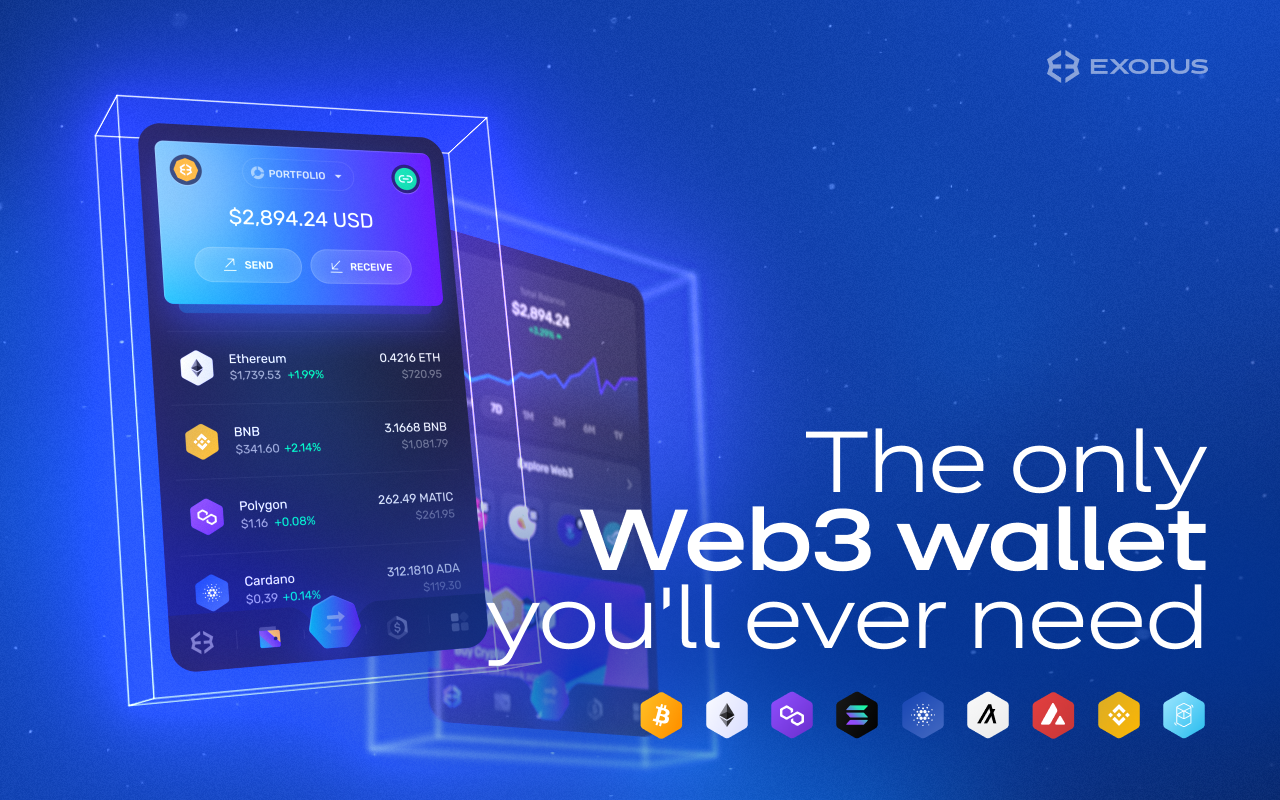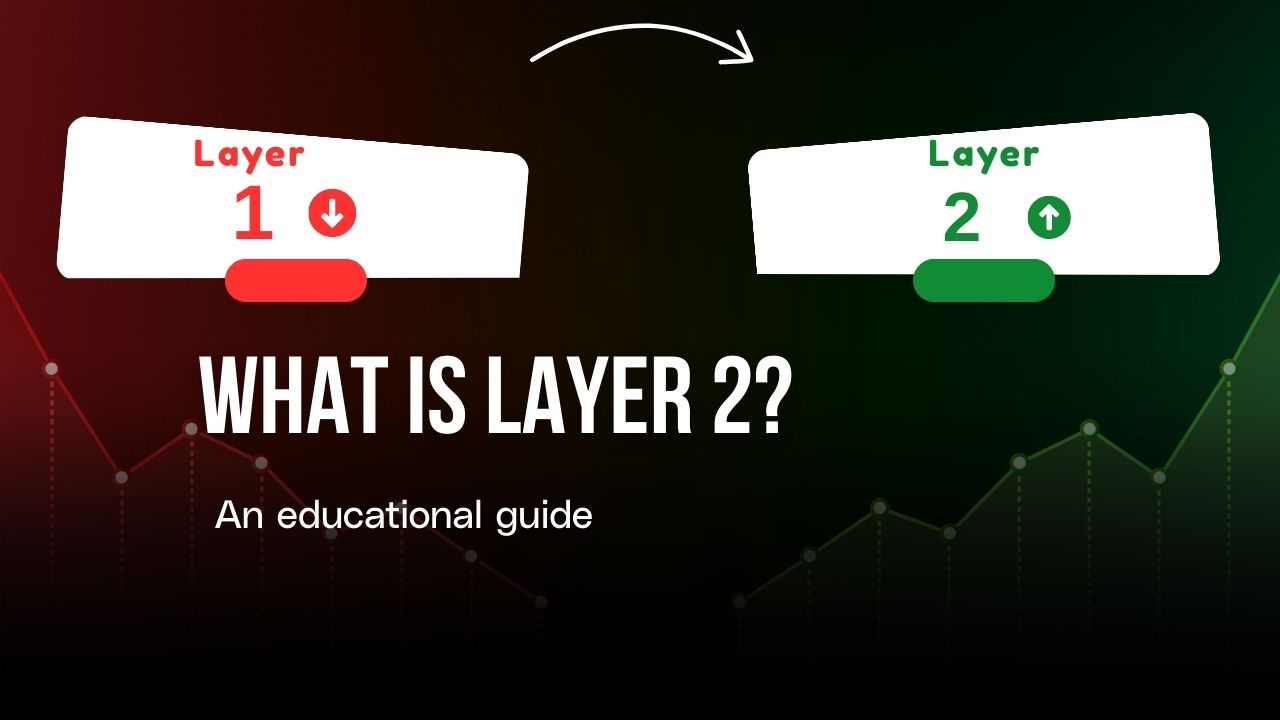Web3 wallets are great for those who own crypto and NFTs and are useful in the DeFi space.
A prime example of a wallet with the best features a crypto trader could ask for is the Exodus web3 wallet. But how do you set up an Exodus Web3 Wallet, and how is the Exodus Web3 Wallet used?
In this guide, you’ll get everything that you need to know about the wallet by digging into its security, reputation, and some of the features available in the wallet.
What Is Exodus Web3 Wallet?
The Exodus Web3 Wallet is a non-custodial, multi-chain crypto wallet available designed both as a browser extension and mobile application.
Exodus initially gained popularity through its desktop and mobile wallets, which provide an intuitive user interface for both beginners and experts in the crypto world.
The wallet also caters to other features such as allowing users to stake their cryptocurrencies, exchange and earn passive income.
Key Features That Set Exodus Apart
Multi-Chain Support Across 20+ Networks
One of the standout features of the Exodus Web3 Wallet is its wide blockchain compatibility. The wallet supports major networks including:
- Ethereum and its layer-2 solutions
- Solana for high-speed transactions
- BNB Smart Chain for DeFi activities
- Polygon for cost-effective operations
- Avalanche for enterprise applications
- Algorand for sustainable blockchain solutions
- Base with light support for emerging protocols
This multi-chain approach eliminates the need to manage separate wallets for different cryptocurrencies, streamlining your digital asset management into one convenient platform.
Getting Started: Installation and Setup Guide
Installing the Browser Extension
Setting up your Exodus Web3 Wallet begins with installing the browser extension:
- Visit the official Exodus website and navigate to the Web3 wallet section
- Click “Add to Chrome” or “Add to Brave” depending on your browser
- Follow the installation prompts to add the extension
- Pin the Exodus extension to your browser toolbar for easy access
Creating Your Wallet
Once installed, you can create a new wallet or restore an existing one:
- Click the Exodus extension icon in your browser
- Select “Create New Wallet” for first-time users
- Generate and securely store your 12-word recovery phrase
- Create a strong password for additional security
- Confirm your setup by verifying the recovery phrase
Synchronizing Across Devices
To access your wallet across multiple devices:
- Download the Exodus mobile app from your device’s app store
- Open the app and select “Restore Wallet”
- Enter your 12-word recovery phrase
- Use WalletConnect to link your mobile and browser wallets for seamless synchronization
Exodus Web3 Wallet vs. Other Wallets

| Feature | Exodus Web3 Wallet | MetaMask | Trust Wallet | Phantom |
|---|---|---|---|---|
| Platforms | Desktop, Mobile, Browser Extension | Browser Extension | Mobile, Browser Ext. | Browser, Mobile |
| Multi-Chain Support | 20+ blockchains | Primarily Ethereum | 70+ blockchains | Solana, Ethereum |
| NFT Gallery | Yes (multi-chain) | Yes (Ethereum) | Yes (multi-chain) | Yes (Solana, ETH) |
| Built-In Exchange | Yes | Yes | Yes | Yes |
| Staking | Yes (in-app) | Limited (via dApps) | Yes | Yes (Solana) |
| Hardware Integration | Trezor | Ledger, Trezor | No | No |
| Ease of Use | Very high | Moderate | High | High |
Pros and Cons of Exodus Web3 Wallet
Like any tool in the crypto space, the Exodus Web3 Wallet comes with its own strengths and trade-offs. Understanding both sides is essential whether you’re diving into Web3 for the first time or managing a diversified crypto portfolio.
Pros:
One of the most appealing aspects of Exodus is its beautiful and intuitive user interface. It’s clean, modern, and doesn’t overwhelm the user with unnecessary complexity. If you’ve ever felt intimidated by other crypto wallets, Exodus will feel like a breath of fresh air.
Another major plus is multi-device access. You’re not stuck choosing between desktop or mobile because exodus supports both, and it also offers a browser extension. It’s flexibility makes it convenient to manage assets from wherever you are.
Finally, it’s particularly friendly for beginners. Exodus simplifies processes like staking, swapping, and tracking portfolios. It lays out in a visually appealing, logical manner, with tooltips and helpful guides to make the journey smoother.
Cons:
However, it’s not perfect. One important note is that Exodus Web3 Wallet isn’t fully open-source, especially when compared to the Exodus desktop wallet. This might be a concern for users who prioritize full transparency and community auditability.
Also, while Exodus supports dApps and staking, its DeFi capabilities are more limited than those of MetaMask, which tends to be the go-to wallet for interacting deeply with Ethereum-based DeFi protocols.
Lastly, the community around Exodus is smaller than some of its competitors like MetaMask or Trust Wallet. While this doesn’t affect usability, it does mean fewer tutorials, fewer community-driven solutions, and less buzz.
Who Should Use Exodus Web3 Wallet?

Now, let’s talk about who this wallet is really made for.
First off, it is made for beginners. If you’re new to Web3 and want a gentle learning curve, Exodus wallet offers a clean slate that won’t intimidate you.
Then there are the investors who want to earn passive income. Exodus also makes staking straightforward with in-app options for popular assets like Solana and Cardano. With this, you don’t need to rely on third-party platforms.
For NFT collectors, Exodus is a solid choice too. It supports multi-chain NFT storage, so you’re not limited to Ethereum.
DeFi users who are looking for basic interaction with multiple chains will also appreciate the wallet’s multi-chain compatibility, even though it’s not as granular as MetaMask in terms of connecting to advanced dApps.
And finally, mobile-first users who still want the option to switch to desktop occasionally will find that Exodus hits the sweet spot. It doesn’t force you to choose one over the other.
Tips for Safeguarding Your Exodus Wallet
In crypto, security is everything. Even though the app is user-friendly, don’t let that lead to carelessness.
Here are some best practices you must follow to safeguard you crypto assets while using the Exodus wallet:
- Store your recovery phrase offline. Don’t keep it in your email or on your phone. Instead, write it down and keep it in multiple safe places ideally physically separated.
- Never share your recovery phrase with anyone, not even someone claiming to be Exodus support.
- Combine upper and lowercase letters, numbers, and symbols for your passwords. A good rule is: if you can easily remember it, it’s probably too weak.
- Consider pairing Exodus with a hardware wallet like Trezor for added protection if you store huge amounts of crypto in your wallet. This will make your virtually impossible to hack remotely.
- Update the wallet software regularly. Exodus rolls out updates to patch vulnerabilities and enhance features, so staying up to date is an easy but crucial habit.
See also: What is a DeFi Wallet and How Does It Work for Beginners?
Discover more from Dipprofit
Subscribe to get the latest posts sent to your email.



